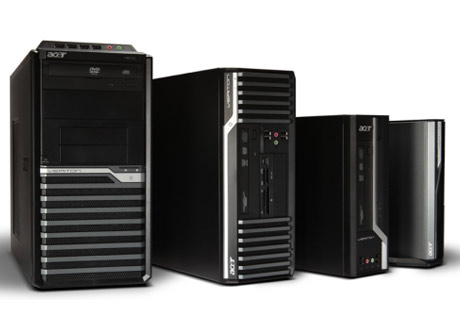
Desktops have leveraged the computing segment by combining portable capabilities with powerful functionalities and specifications. Acer makes a mark with its new Veriton 4610 and 6610 Series. Featuring the company’s innovative Proshield Management and Security software, these solutions safely store essential documents and are powered by second generation Intel Core i processors.
With Intel HD Graphics 2000, owners can enjoy around 1.6GB of shared graphics memory along with 2TB hard drive capacity. Acer’s Veriton L Series 3 litre form factor lowers space consumption whereas the M Series 30 litres form factor delights users with expansion options like graphics cards, hard drives and other hardware peripherals. The Veriton 4610 and 6610 Series flaunt an eye-catchy matte black design with silver and black vents.
Harry Boyadjian, Acer’s Product Manager for Commercial Desktop, commented, “Our newest range of Veriton 4610 and 6610 Series’ desktops has been engineered with reliability in mind, without compromising on technology. Our intuitive cable management and tool-less design delivers consistent performance throughout the life of this user-friendly product.â€
These new units come along with Acer Proshield which sports an encrypted hidden drive for personal files, a file shredder to permanently remove sensitive data from the system and a BIOS import and export tool that enhances system management. The Veriton 6610 Series includes Intel vPro that permits remote system management and Intel’s Stable Image Platform Program which reduces system’s Standard Operating Environment development time. Integrated with Acer’s unique Veriton Control Centre Suite, the newly unleashed offerings uplift the overall user experience.
The Veriton 4610 Series can be purchased from 1 March 2011 in Australia for a starting price of $935 (approx Rs. 42,734) and in New Zealand from $1239 (approx Rs. 43,307). The pricing and availability details for the Veriton 6610 Series are unclear as of now.




